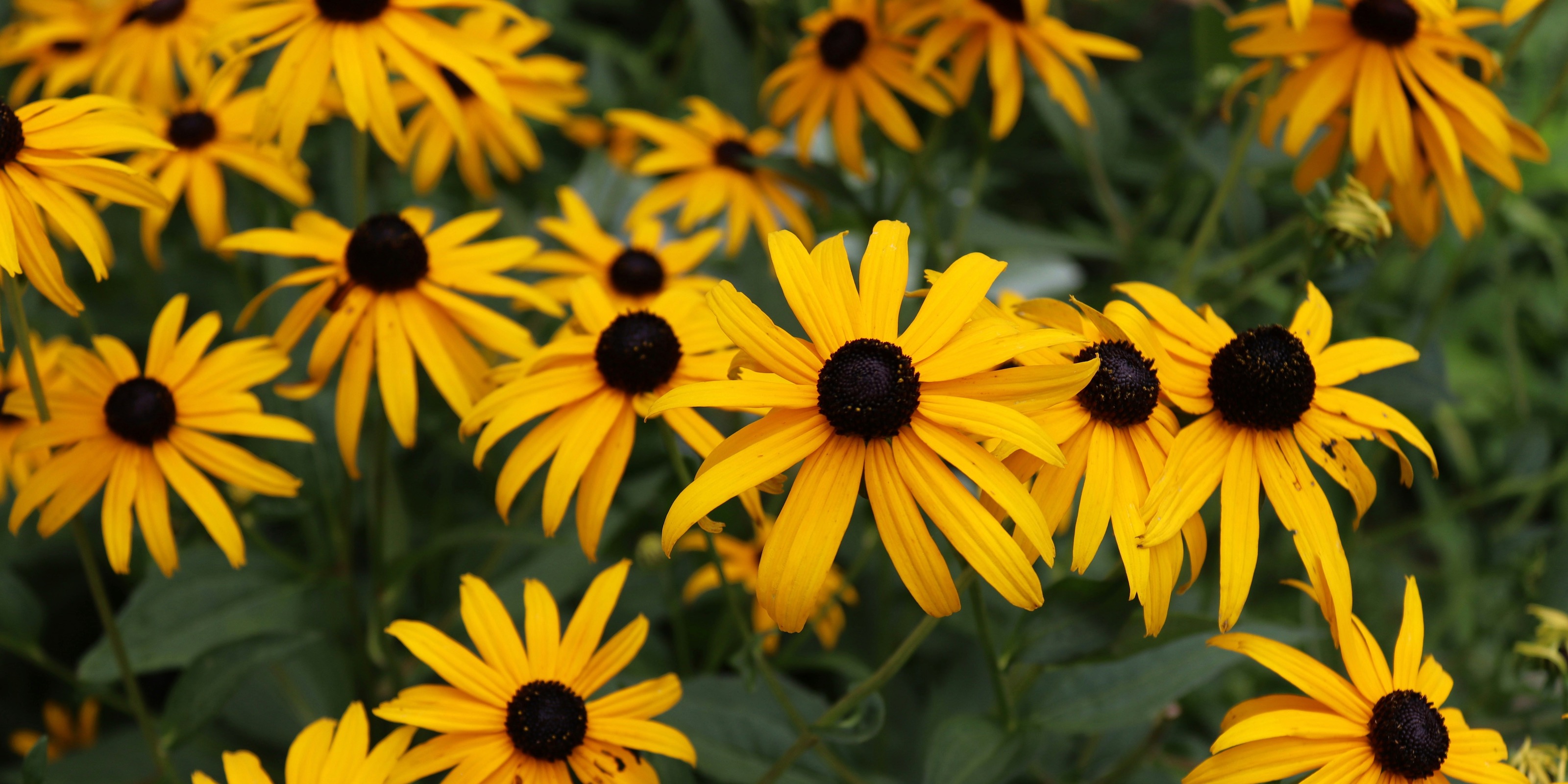How to winterize black-eyed Susans – and ensure a joyful display for years to come
Discover how to protect these sunshine-colored flowers over winter


It is a native North American flower, but the black-eyed Susan is thought to owe its unusual name to a popular 18th century English song about a girl looking for her sweetheart, William, among a ship’s crew.
The nickname is inspired by the brown-black cone-shaped center of the daisy-like flower that stands out against its sunshine yellow petals. The state flower of Maryland, its scientific name is Rudbeckia hirta, which partly references the fact its leaves are covered with coarse hair (hirta is Latin for hairy).
We have consulted the experts on how to prepare this charming and cheerful plant to withstand winter weather, ensuring a bright display in borders and beds for many summers to come.

Which varieties of black-eyed Susan you should winterize
Black-eyed Susan is part of the Asteraceae family, which includes the common daisy, and comes in several different varieties. It can be grown as an annual, which is planted in spring, blooms in summer and dies with the first frost.
But some types are biennials, with a life cycle that lasts two seasons: they germinate and grow one year, flower and die the next.
There are also perennial varieties, lasting three to five years. Lifting and dividing this variety in early spring will also prevent overcrowding and keep them healthy. To do this, simply dig up clumps of them, separate with a fork or spade and replant in another part of the yard, allowing plenty of space for them to spread.
The latter two are the types you should consider winterizing, to make sure they survive the cold weather and return next year, and here is how to do it.
Cut back stems after the first frost

Black-eyed Susans bloom from July until the first frost. But go easy with the pruning shears after the flowers have begun to whither and die back, advises Nathan Thorne, a landscape gardener. ‘Let the seed heads stand so they nourish the garden and wildlife during the winter months and protect the base of the plant,' he suggests.
‘They’ll be a source of food for birds such as the finches and chickadees all winter, and the dry stems provide a windbreak and insulation from frost. Wait until late in the winter or very early in the spring, when new growth begins, to cut the old back to the ground.’
However, if you want to collect the seed heads to save and sow the following year, trim them off when they turn dry and brown. Leave at least half to two-thirds of the stem to act as a shield against the elements.

The CEO of Handy Flowers, Nathan is a seasoned horticulturist with more than a decade’s worth of experience in planting and maintaining beds and yards. He is always happy to share his expert insights on how best to make gardens grow.
Bed them in with mulch

‘While black-eyed Susans will tolerate all sorts of cold, an extra layer of insurance never hurts,’ adds Nathan. ‘When the first hard frost hits, bed them in with an organic mulch: straw, leaves, or compost will do.
'Apply a thick layer (several inches) around the base to protect roots from freezing deep into the ground and retain moisture underneath snow.'
You can make your own leaf mulch for free using the fallen foliage you've blown and raked from your lawn. This Worx TRIVAC 3-in-1 electric leaf blower/mulcher/vac from Walmart creates mulch as it clears the grass and pathway.
If you don't have enough garden waste to create a cosy bed for your plants, cover with a store-bought mulch, such as this natural pine needle mulch from Target.
Design expertise in your inbox – from inspiring decorating ideas and beautiful celebrity homes to practical gardening advice and shopping round-ups.
Spring clean around the shoots

‘In early spring, remove mulch, and fertilize to stimulate new growth,’ says Lisa Wark, a master gardener. ‘An all-purpose, balanced fertilizer with equal parts nitrogen, phosphorus and potassium, such as this Miracle-Gro water-soluble plant food from Lowe's, works well for black-eyed Susans. They revive quickly and reward with vigorous summer blooms.
‘Over the 10+ years I’ve been caring for gardens in the Atlanta area, properly insulating plants through winter has allowed me to guarantee plant health.
'The key is understanding each plant’s particular needs. Black-eyed Susans are hardy but still benefit from some extra care to ensure their longevity. With the proper techniques, these cheerful yellow blooms can grace yards for many years.’

Lisa is director, marketing and operations at Champion Distinctive Landscaping Design and Care. Her passion for gardening started in college. She has an award-winning garden and also mentors young women entering the landscaping and horticulture fields.
Make easy work of growing bright and beautiful blooms next spring by planting a wildflower garden. Follow the advice in our guide on native wildflowers to sow in October, and let nature take the lead by choosing self-seeding flowers that will fill your yard with an naturalistic abundance of color.

Alison is a contributing gardens writer for Homes & Gardens, writing on a range of topics from plant care to garden design. She has recently landscaped the outside space of her Victorian home, replacing crazy paving and cracked slabs with new lawn, and is currently cultivating a fruit bed.